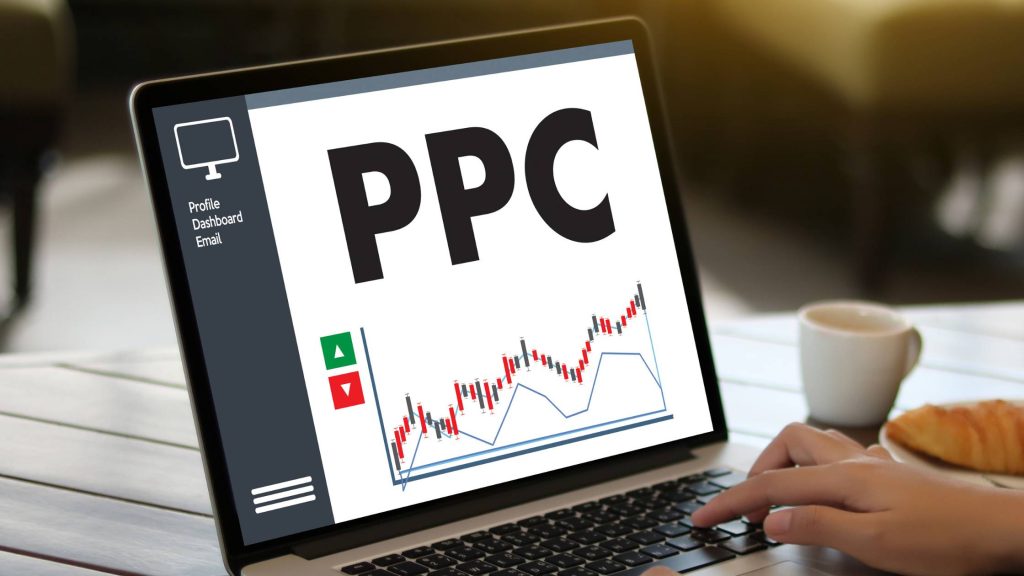Let’s be honest – insurance is not the sexiest industry. It’s not a flashy sneaker drop or a viral beauty launch. But here’s the thing: when customers want peace of mind, they’re searching online – and that’s where your insurance digital marketing shows up (or doesn’t).
In 2025, over 69% of insurance consumers ran a search before scheduling an appointment, and 51.8% of the 35 million home insurance policies in the UK were purchased online. With offline purchases decreasing year after year, it leaves us to ask: how important is a digital insurance marketing strategy?
Whether you’re an independent broker trying to stand out in a crowded local market or a national provider juggling dozens of services and compliance rules, one thing is true: your customers are online. And if your digital presence is lagging, your competitors are ready to pick up the slack.
This guide is designed to help you cut through the noise and make informed, strategic decisions about your online marketing—no jargon, no gimmicks—just practical advice and proven tactics tailored to the insurance industry.
We’ll cover everything from SEO and content strategy to email marketing and social media. We’ll even throw in a few good (and bad) campaign examples to learn from. Because while insurance might be serious business, your marketing doesn’t have to be a total snooze.
Understanding the Landscape of Insurance Digital Marketing

Insurance isn’t like fashion, food, or fast tech. You’re not selling lifestyle, luxury, or impulse buys – you’re selling security, reliability, and peace of mind, typically wrapped in a strict regulatory box. That means your digital marketing can’t just get clicks – it must build trust, educate, and generate leads that actually convert.
And yes, we know your industry is full of slick comparison sites and disruptors with deep pockets. But here’s the good news: you don’t need a million‑pound budget, you just need to be smart.
Here’s what matters:
- Consumers are researching online: With nearly 70% beginning their journey with no particular broker in mind (according to the LSA), your SEO, site authority, and content must be compelling before they even type your name.
- Trust is everything: A glossy homepage won’t cut it. You need clear messaging, easy-to-find testimonials, and jargon-free explanations that make visitors feel confident and understood.
- B2C vs. B2B is different: Personal insurance products need emotional simplicity. Commercial or niche insurance products demand data, case studies, and industry-specific credibility. Tailor your marketing to your audience, not the other way around.
In short, digital marketing for the insurance industry isn’t about shouting louder; it’s about showing up in the right places, with the right message, at the right time.
Building Trust in a Digital World

Seven in ten customers will buy more from brands they trust, so if marketing insurance online had one job, it would be this: build trust before anyone ever picks up the phone.
We’re talking about an industry that deals with worst-case scenarios – accidents, illnesses, theft, and disasters. Your audience isn’t just buying a product for the sake of it; they’re buying reassurance. And in 2025, that reassurance starts digitally. Long before a prospect speaks to an advisor, they’re sizing you up online: Do they seem credible? Helpful? Clear? Do they even feel human?
Here’s how to earn that trust in the 2025 digital world:
1. Be useful, not salesy
Content that informs builds more trust than content that sells. Think of it this way: if someone is googling “Do I need public liability insurance for my yoga studio,” they’re looking for an answer, not necessarily a sales pitch. Give them that answer clearly, confidently, and without gatekeeping the information they’re desperate to know. Educational blog posts, explainer videos, downloadable guides, and FAQs all help position you as a trusted source, not just another policy pusher.
2. Show your (professional) personality
Trust doesn’t mean boring. If your content reads like it was generated by a 1990s fax machine, people will click away. Your tone can be warm, clear, even a bit witty – especially if it makes complex topics feel more accessible. Being human helps people connect with your brand, especially in a sector known for, well, not that.
3. Back up your claims with a little social proof
Testimonials, case studies, Trustpilot reviews, star ratings, user-generated content – they all signal that real people trust you. This is known as the “bandwagon effect”, where people are naturally more inclined to join trends and follow the crowd, making social proof a powerful tool for driving sales. But it’s not just about slapping logos or stars on your homepage. Build social proof into your user journey by:
- Include testimonials on landing pages.
- Link to independent reviews in CTAs or via embedded blocks on your website.
- Use mini case studies in blog posts to illustrate what you did and why it worked.
4. Keep it simple (and compliant)
Yes, insurance is complex. But your messaging shouldn’t be. Simple language fosters clarity, and clarity in turn builds trust. Plus, clarity = compliance. Avoid vague claims and jargon that might raise red flags with regulators or confuse prospects. If you wouldn’t say it in a conversation, don’t write it on your site.
5. Make it easy to take the next step
Trust is fragile. If someone’s ready to talk to you, don’t make them hunt for a phone number, fill in a 12-field form, or decipher your contact page. Clear calls-to-action, well-labelled buttons, fast load speeds: these aren’t just “technical details,” they’re trust builders.
TL; DR:
If your digital presence feels confusing, salesy, or soulless, you’ll lose people. But if you show up as credible, human, and helpful, you’ll earn the most valuable thing in insurance digital marketing: trust. And once you’ve got that? The leads will follow.
SEO for Insurance Brokers

If trust is the primary goal of digital marketing in the insurance industry, visibility is the secondary goal. After all, it doesn’t matter how brilliant your content is if no one ever sees it. That’s where SEO comes in.
Search engine optimisation (SEO) isn’t just for tech startups or fashion brands. In the insurance industry, where the majority of customer journeys begin with a Google search, it’s essential. Whether someone’s typing “best landlord insurance UK” or “commercial fleet insurance Manchester,” your goal is the same: be the answer that shows up.
Why SEO matters for insurance brokers in 2025
Let’s look at the facts:
- Over 90% of online experiences start with a search engine
- 69% of insurance customers begin their buying journey via search
- 89% of customers are scouring the internet to find out what customers are saying before they commit to your service
- And increasingly, people are looking for local or niche-specific policies – areas where brokers can absolutely win
So, how do you climb those rankings without turning your blog into a buzzword soup? Let’s break down the key SEO factors for an insurance brand.
1. Get your keywords in order
You don’t need to guess what your customers are searching for—you can use tools like Google Keyword Planner, Ubersuggest, or SEMrush (affiliate link) to find out. Pro tip: Think like your customer. People don’t Google “comprehensive multi-line SME policy options” — they Google “business insurance for freelancers”. Targeting the right keywords is an essential part of insurance website SEO.
2. Start blogging (strategically)
We know: not every broker aspires to become a blog copywriter. However, fresh, relevant content is one of the best ways to demonstrate to Google (and potential clients) that you are an expert in your field.
Answer the fundamental questions people are typing into search:
- “Do I need insurance if I’m self-employed?”
- “What’s the difference between contents and buildings insurance?”
- “How much is public liability insurance for a dog walker?”
Create blogs, videos, or guides around these. Optimise each one for a specific keyword and make sure it’s genuinely helpful. Google knows when you’re bluffing. Need a good place to start? We wrote a comprehensive blogging guide here.
3. Don’t forget local SEO
Especially for independent insurance brokers, when mobile queries that contain “insurance near me” have grown by over 100% in the past two years, local search optimisation is low-hanging fruit:
- Set up and optimise your Google Business Profile
- Collect local reviews (on Google, Trustpilot, Feefo)
- Include your location(s) naturally in meta tags, page content and headings
If someone searches “car insurance Bristol” and you’re based in Bristol, there’s no reason you shouldn’t be showing up.
4. Make your site Google (and user) friendly
SEO isn’t just about keywords—it’s also about:
- Fast load times
- Mobile responsiveness
- Clear site structure (no confusing menus)
- Proper use of headings, meta tags, and internal links
- Alt text on images (bonus points for accessibility)
If your site is slow, cluttered, or appears outdated, your rankings—and your bounce rate—will likely reflect that. Download our SEO Survival Kit for a free, handy on-page SEO checklist.
5. Build authority over time
Google aims to display content that users can trust. That means:
- Earning backlinks from reputable sources (think: directories, partner sites, media mentions)
- Publishing regularly
- Maintaining a consistent tone and level of expertise
And remember – when considering SEO for your insurance business, it isn’t a one-time thing. It’s a long game. But here’s the thing – if your competitors are ranking above you, they’re getting the leads. SEO helps level the playing field. Start with a clear keyword plan, write helpful content, optimise your site, and keep going. No black hat tricks – just smart, steady visibility that pays off.
Paid Advertising That Actually Works

Paid ads can feel like a necessary evil, especially in the insurance industry, where CPCs (cost-per-click) are notoriously high and keywords are among the most expensive in Google Ads and Bing Ads. But done right, paid search and display campaigns can bring in highly qualified leads and boost visibility for competitive keywords you’re not (yet) ranking for organically.
The trick? Don’t throw money at the wall and hope for conversions. Start with strategy, refine with data, and always (always) target the right intent.
1. Google Ads: The Search Goldmine
Google Ads still dominate for insurance marketers. Why? Because they let you meet customers at the exact moment they’re searching for a solution.
Take a look at these intent signals:
- “Cheapest landlord insurance UK” = price-sensitive and ready to compare
- “Fleet insurance for construction company” = niche-specific and likely B2B
- “Do I need cyber insurance?” = earlier in the funnel, but a great chance to educate and convert
Instead of bidding on broad, expensive terms like insurance, go for long-tail keywords that are:
- Location-based (fleet insurance Liverpool)
- Sector-specific (insurance for dog groomers)
- Solution-led (public liability insurance for events)
Bonus: These are usually more cost-effective and attract more relevant traffic.
2. Retargeting: Stay Top of Mind
Insurance is rarely an impulse purchase. People might visit your site, poke around, and disappear for days (or weeks). That’s where retargeting comes in.
By showing relevant ads to people who’ve already visited your site, you:
- Stay visible during the research phase
- Reinforce brand familiarity
- Encourage return visits (and conversions)
Just don’t overdo it. No one wants to feel stalked by a pop-up promising “FREE QUOTES!!!” for the next six months.
3. Display Advertising: Brand Visibility at Scale
Display ads can help increase brand awareness, especially for niche or regional providers. Target by location, audience interest, or even context (e.g. showing ads on SME business blogs for commercial products).
Make sure your creatives:
- Are on-brand and professionally designed
- Have a single, clear message
- Include a compelling (but not pushy) CTA
And please, skip the generic stock photos of smiling couples signing paperwork.
4. Track. Test. Tweak.
Don’t just “set and forget.” Use Google Ads data (or your preferred ad platform) to:
- Monitor click-through rate (CTR)
- Track conversion rate (not just traffic)
- Identify which keywords and ads bring in real leads, not just clicks
And remember to A/B test everything: headlines, landing pages, ad copy, and even the time of day you show ads.
Paid advertising in insurance doesn’t have to be expensive, guesswork. When you target intent, optimise spend, and track performance, it can become a valuable part of your insurance website digital marketing toolkit. Just remember: thoughtful beats flashy, every time.
Creating Content That Converts

Content marketing costs 62% less than traditional advertising methods while potentially generating three times more sales opportunities. And you don’t need to be a Pulitzer-winning storyteller to create content that converts. You need to understand your audience’s needs—and meet them with clarity, relevance, and a little personality.
Insurance is often perceived as a “dry” industry, but that’s precisely why good content is crucial. Can you simplify a complex product, speak directly to a concern, or answer a question without baffling your audience? You’re already ahead of half the competition.
Here’s how to create content that does more than fill space.
1. Say it simply
Forget the jargon. Your customers don’t want to read about comprehensive indemnity exclusions; they want to know if they’re covered when their van gets broken into or if their dog bites someone at the park.
Aim for:
- Short sentences
- Plain English
- Clear benefits
- Everyday examples
If someone with no insurance knowledge can understand it, you’ve nailed it. And if someone in compliance also signs it off? You’re golden.
2. Be genuinely helpful
Not all content needs to sell. The best content doesn’t. Instead of pushing a policy, aim to solve a problem.
Think:
- Explainer videos: “What is professional indemnity insurance (and do I need it)?”
- Blog posts: “Cyber insurance for small businesses: what’s covered and what’s not”
- Downloadables: “Your 2025 guide to choosing landlord insurance”
When people find real value in your content, they’re far more likely to trust you when it’s time to buy.
3. Make your CTAs subtle (but clear)
You don’t need to shout BUY NOW in red caps. A good call-to-action feels natural and useful:
- “Speak to one of our advisors”
- “Get your free quote in under 60 seconds”
- “Download our guide to learn more”
Position CTAs contextually, based on where someone is in the funnel. Don’t ask for marriage on the first date. For our guide on how to write a call to action the right way, click here.
4. Match your tone to your audience
Writing for self-employed hairdressers? Keep it light, clear, and practical. Writing for CFOs of logistics firms? Demonstrate your credibility, provide relevant data points, and showcase your professionalism. Your tone should flex to fit your ideal client – but still feel like you.
Brand voice consistency is crucial here, and this is where your brand tone of voice guidelines are essential. It doesn’t need to be quirky. It just needs to be you.
5. Think beyond the blog
Good content isn’t just blogs. It’s:
- Website copy that explains without overwhelming
- Product pages that answer questions before they’re asked
- Video scripts, emails, FAQs, quote tools, and onboarding guides
Content is anything that communicates who you are, what you offer, and why it matters. Treat all of it with the same care and attention.
Email Marketing for the Long Game

If digital marketing channels were relationships, email would be the long-term partner: low-maintenance, loyal, and still incredibly effective when treated right. In an industry like insurance, where trust is paramount and decisions aren’t always made on the spot, email marketing provides an opportunity to build lasting connections, not just fleeting wins. Here’s how to make email work for your brokerage or insurance brand in 2025:
1. Segment (or get ignored)
Mass emails to a generic list? Not the vibe. 88% of insurance customers demand more personalisation from providers. Whether you’re targeting business owners, landlords, young drivers, or first-time buyers – the more tailored your emails are, the more likely they’ll land.
Start with smart segmentation:
- Product type (e.g. life insurance vs. commercial fleet)
- Customer type (individual vs. business)
- Stage in the funnel (lead vs. quote vs. lapsed customer)
This helps you send the right message to the right person – without relying on luck.
2. Automate your nurture journeys
Automation doesn’t mean robotic. A well-built welcome series or lead nurture sequence can feel helpful, thoughtful, and timely, without requiring you to send a single thing manually.
Ideas to try:
- New lead drip: a short sequence of educational emails + a soft CTA to speak to an advisor
- Quote chasers: gentle reminders that don’t feel like pressure
- Renewal nudges: value-led prompts when a policy is close to expiry
Set it once. Optimise often. Reap the rewards.
3. Be clear, not clever
Insurance digital marketing emails should be easy to read and quick to act on. Keep your subject lines sharp, preview text engaging, and your copy scannable. Use bolding, bullet points, and a single CTA.
Example: Subject: “Do you still need cover for your business?”
CTA: “Get a fresh quote in 2 minutes”
Your customers aren’t looking for a 1000-word newsletter – they’re looking for a quick solution.
4. Offer real value (not just reminders)
Not every email has to push a product. Some of your best-performing campaigns will be ones that educate or support.
Think:
- “5 mistakes to avoid with landlord insurance”
- “How to protect your business from data breaches”
- “What your policy doesn’t cover – and why it matters”
When your emails consistently help, people start to open them on instinct.
5. Stay compliant
Let’s say it: get consent. Make unsubscribing easy. Respect your list. GDPR guidance should guide your approach – no shady tactics, no purchased lists. Long-term trust always beats short-term clicks.
In short, email marketing isn’t dead—it’s just misused. Done right, it’s your most direct line to warm, interested leads. Segment carefully, automate where it helps, and always focus on value. No fluff. No spam. Just useful, human conversations delivered to inboxes that matter.
Social Media: Do Insurance Companies Really Need It?

Let’s not sugarcoat it: social media and insurance can be an awkward fit. You’re not slinging oat milk or festival lineups. But that doesn’t mean you should ignore it altogether. 49% of consumers use social media to research and make purchasing decisions, so when used well, social media can boost trust, educate your audience, and make your brand feel more approachable (without dancing on TikTok unless you really want to).
The trick is knowing where to show up, what to post, and why it matters.
1. Pick your platforms wisely
Not every channel is worth your time. Focus on the ones that fit your audience, your goals, and your tone of voice:
- LinkedIn: Ideal for B2B brokers, commercial insurers, and corporate brand-building. Share insights, industry news, case studies, and team expertise. Less memes, more credibility.
- Facebook: Still a valuable platform for community-driven engagement and local reach. Great for customer reviews, answering questions, and running lead-gen ads for personal products.
- Instagram: Not always essential, but can work for high-visual brands (e.g. travel, pet or home insurers). Also good for behind-the-scenes and storytelling content.
- TikTok: Only go here if your team’s confident on camera and your messaging translates visually. That said, younger brokers and challenger brands have made it work with a mix of humour and education.
- YouTube: Seriously underrated. Use it for explainer videos, customer stories, and SEO-friendly tutorials.
2. Post with purpose
Social media shouldn’t be a dumping ground for blog links and boring product posts. Mix up your content:
- Educational tips: “3 things to check before renewing your policy”
- Behind-the-scenes: Meet the team, office updates, Q&As
- Client stories: With permission, real customer success beats stock photos any day
- Myth-busting: Clear up common misunderstandings (ideal for reels and carousels)
The deal: aim for content that helps, not just sells.
3. Don’t chase trends you don’t understand
You don’t need to jump on every trending audio or national awareness day. You probably shouldn’t. Be consistent, be credible, and post at a pace you can maintain. If you’re not sure whether something fits your brand, it probably doesn’t.
4. Use social proof (and engagement) to your advantage
Encourage reviews. Share them. Respond to comments and messages. People notice when you show up and engage – and they notice even more when you don’t. You can also repurpose positive reviews into short testimonials, quote graphics, or highlight reels. It builds credibility and breaks up your content visually.
5. Think ads, not just organic
With organic reach on a slow decline, paid social is often where the real magic happens:
- Lead forms on Facebook and LinkedIn
- Video ads for education or brand awareness
- Retargeting from previous website visitors
Set a small test budget, track performance, and scale what works.
The bottom line: You don’t have to go viral, but you do have to show up. Choose the platforms that make sense for your audience, share content that builds trust, and don’t try to be something you’re not. Even in insurance, social media can work — just skip the dance trends.
Measuring What Matters

You’ve got content going out, ads running, emails scheduled, blogs being written… but is any of it working?
In insurance digital marketing, success isn’t just about “doing the thing” – it’s about knowing which things are moving the needle. That means going beyond vanity metrics (likes, shares, page views) and focusing on what truly matters: leads, conversions, and meaningful engagement.
Here’s how to measure your insurance marketing like a pro (without drowning in dashboards).
1. Define what success looks like
Begin by establishing realistic and strategic KPIs that align with your business objectives.
Ask:
- Are you trying to grow website traffic?
- Generate leads through quote forms or callback requests?
- Increase policy renewals or upsells?
- Improve brand awareness in a niche market?
Once your goals are clear, select the metrics that align with them. Otherwise, you’ll spend hours reporting on numbers that don’t mean anything.
2. Track conversions, not just clicks
It’s easy to get excited about a spike in website visits or a viral post. But did it lead to actual enquiries or sales?
Focus on:
- Quote form completions
- Calls or callback requests
- Email signups from relevant content
- Downloads of lead magnets (e.g. guides, checklists)
- Direct enquiries via contact pages or chat tools
These are the touchpoints that actually bring in business.
3. Use the right tools (and connect the dots)
- Google Analytics 4: For traffic sources, user behaviour, goals and conversions
- Google Tag Manager: For tracking specific actions (like form submissions or CTA clicks)
- Search Console: For organic performance and SEO health
- SEMrush: For tracking website visibility and keyword positions
- Your CRM or email platform: To see which contacts engage and convert
You don’t need a PhD in analytics to track performance. But you do need a few good tools:
Connect the dots between your marketing and your pipeline. That’s where the insights are.
4. Avoid vanity metrics
Sure, it’s nice when a post gets 100 likes. But if none of those people clicked through to your site or remembered your name the next day, what did it really achieve?
Instead, prioritise:
- Engagement rate over impressions
- Click-through rate (CTR) over open rate
- Conversion rate over traffic volume
- Lead quality over lead quantity
Your insurance digital marketing should support sales. Don’t lose sight of that.
5. Make reporting useful
Reporting shouldn’t be an academic exercise. Keep it simple, consistent, and actionable. Share what worked, what didn’t, and what you’re going to test next. That way, your insurance digital marketing strategy becomes a cycle of learning, not just a list of tasks.
Great Insurance Marketing Campaigns to Learn From
Beyond the big retail providers, insurance might not be known for big creative risks, but some brands have cracked the code. Whether it’s by building trust, injecting humour, or just showing they actually understand their audience, these campaigns prove that insurance digital marketing doesn’t have to be dull.
You don’t need a multi-million-pound budget to take inspiration from them – just a willingness to do things a little smarter.
Here are a few standouts worth learning from.
1. Aviva: “It takes Aviva”

Why it worked:
Aviva’s ongoing “It Takes Aviva” social media campaign puts everyday customer stories front and centre, often with a slightly humorous twist. It’s sleek, and reassuring, and manages to humanise the brand without resorting to slapstick or stock-photo families.
What to steal:
- Customer-centred storytelling
- Clear tone of voice
- High production values without overpromising
Takeaway for brokers: You don’t need a film crew. Use your own client success stories to show real-world impact.
2. Compare the Market: The Meerkats

Why it worked:
Okay, okay, we know. But love them or hate them, the Meerkats built one of the most recognisable campaigns in the UK. Why? Because it made an otherwise forgettable brand memorable, tied in rewards, and created consistent, character-led content over time.
What to steal:
- Consistency across channels
- Personality in a product that’s hard to differentiate
- Creative loyalty-building (rewards, gamification, etc.)
Takeaway for brokers: You don’t need a mascot, but a little brand personality and a consistent hook go a long way.
4. Direct Line: Fixers, not just insurers

Why it worked:
Direct Line flipped the script from “We’ll cover you when it all goes wrong” to “We’ll fix it fast.” They used recognisable characters (Winston Wolf, Robocop, Donatello…) to dramatise the speed and reliability of their claims service.
What to steal:
- Reframing the value proposition
- Speed and service as marketing tools
- Character-led, high-concept storytelling
Takeaway for brokers: Sometimes, it’s not about the product, it’s about how you deliver it.
How Can We Help?
Let’s be honest: writing engaging, optimised, trust-building insurance content is harder than it looks. You’re juggling compliance, complexity, and a sceptical audience, not to mention the thousand other jobs on your to-do list.
That’s where we come in.
At Big Star Copywriting, we’ve helped insurance companies of all sizes – including Park Insurance and TH March – transform dull product descriptions and outdated web pages into content that drives measurable results. For instance, our work with Park Insurance contributed to a 10% increase in organic traffic, a 20% boost in sales revenue, and a 58% peak open rate for their email broadcasts over 12 months. TH March also trusted us to create SEO-friendly, lead-focused copy that built authority and supported long-term growth.
Whether it’s SEO strategy, website copy, lead-gen landing pages or long-form content marketing, we do the words that make people take notice (and take action).
Sound like the right insurance industry digital marketing partner for you? Let’s talk.
Conclusion: Make Insurance Marketing Work Harder (and Smarter)
Insurance might not be the most glamorous industry, but your marketing doesn’t have to be boring, vague, or stuck in the early 2000s. With the right digital strategy, you can attract better leads, build long-term trust, and outshine the competition – even the ones with cheesy cartoon mascots.
Here’s what we covered:
- Trust is everything: Your digital presence should feel clear, credible and human.
- SEO drives visibility: Think smart keywords, helpful content, and a website that plays nicely with Google (and mobile devices).
- Paid ads need a purpose: target intent, test constantly, and avoid wasting your budget on broad terms that don’t convert.
- Content is (as we’ve been saying for years) king: Simplify the complex, focus on value, and speak directly to your audience’s needs.
- Email builds relationships: Use it to nurture, educate and guide, not just to remind.
- Social media matters (if done right): Show up where it makes sense, share content that helps, and don’t try to be something you’re not.
- Measure what matters: Track real performance, not just surface stats. The goal is quality leads – not likes.
- Great campaigns teach us a lot: From Meerkat to Aviva, innovative brands make insurance relatable and memorable.
- And yes—we can help: Whether you need content strategy, ongoing support or just someone who “gets” regulated industries, we’re here to help.
Because in 2025, good enough isn’t good enough. It’s time to make your insurance marketing work harder and smarter. Ready to get started? Let’s have a chat.
